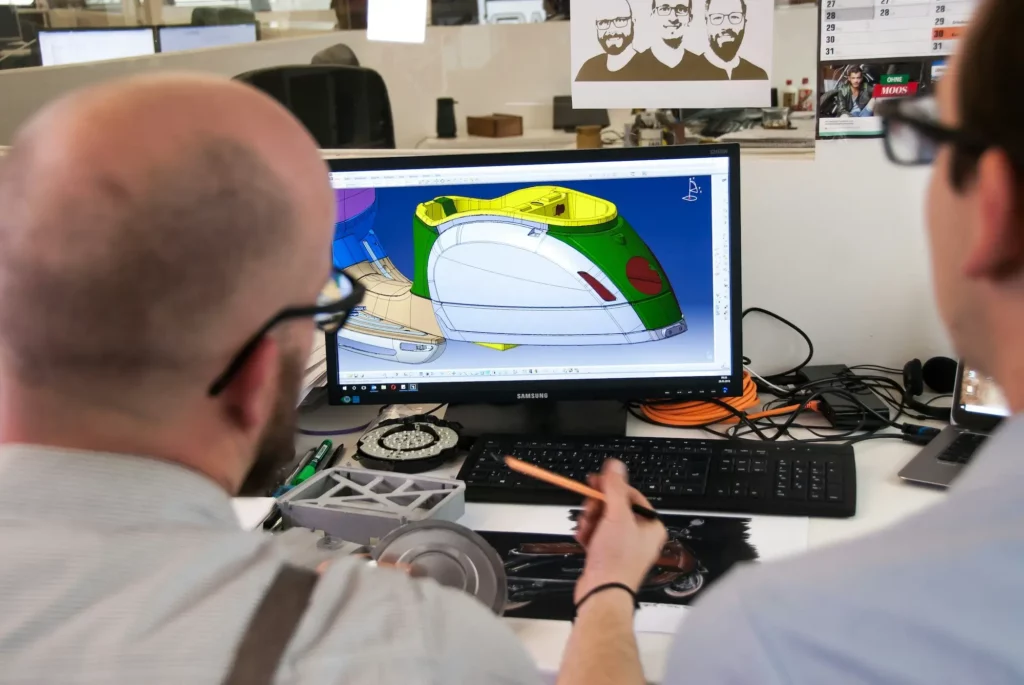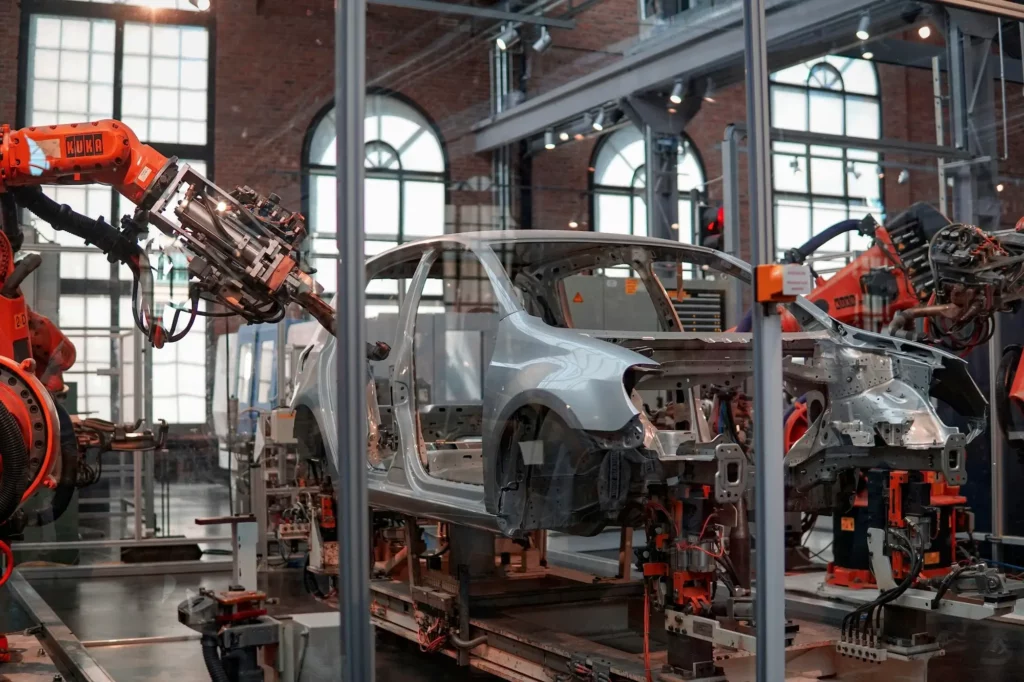Design reviews are meant to help teams catch problems early, stay aligned, and move faster. But in reality, they can often feel messy and slow. Files go missing, feedback gets lost in email threads, and it’s hard to get the right people in the room at the right time.
Miscommunication between designers, engineers, manufacturers, and stakeholders can lead to delays, rework, and confusion about who’s responsible for what.
In this blog post, we’ll walk you through the different types and stages of the design review process.
Types of Design Review
There are different types of design reviews, each with its own purpose. Each review helps improve the design and keeps everyone aligned throughout the project.
Designer and Engineering Design Review
This type of design review is a meeting where designers and engineers check the product’s design before moving forward.
These design review meetings help the team catch problems early, especially for complex projects with many intricate details, so they can save time and money later. There are usually three main stages:
- Preliminary design review – An early check of the basic concept. The team reviews goals, direction, and key design ideas before moving forward.
- Critical design review – A later-stage review focused on final details. The team checks if the design is ready for production and spots any last issues.
- Formal design review – A structured meeting where the team looks at cost efficiency, task management, and risk management. They also review key aspects of the design, such as function, safety, and appearance, to keep the project on track.
These reviews boost collaboration between teams and help everyone agree on what works and what needs to change. They give product teams and engineers a clear view of the design before it goes any further.
Stakeholder Design Review
The stakeholder design review is a meeting where the design and engineering teams share their progress with key stakeholders. These stakeholders may include managers, business leaders, marketing teams, or clients.
The goal of this review is to keep clear communication between technical and non-technical teams. It helps build trust and allows everyone to work toward the same goal.
Design review software can help teams share 3D models with stakeholders without needing them to download anything or learn new tools.
During these meetings, designers and engineers present the following:
- Visual designs – Early mockups, wireframes, or prototypes that show how the product will look
- Progress and challenges – Current status and any technical issues that need attention
- Design goals – How the design supports user needs and business objectives
At the same time, non-technical stakeholders contribute the following:
- Business feedback – Comments based on market, customer, or brand needs
- Timeline and budget input – Details on deadlines, resources, and cost limits
- Decision support – Final thoughts that help shape the next steps
This review focuses on stakeholder alignment. Designers and engineers explain the design choices in simple terms so that non-technical stakeholders can understand them.
When stakeholders are informed and involved, they can make informed decisions about product direction, timelines, and also help avoid last-minute changes or misunderstandings later.
Support real-time input from everyone involved in your design review. Explore CADchat today!
Peer Design Review
A peer design review is a meeting where designers and engineers review each other’s work. Everyone in the room has similar expertise, so the feedback is focused and helpful.
This type of review is a chance to get real-time design feedback from people who understand the work on a technical level.
The team often talks about how to solve common challenges they’ve seen before. They also look for improvement opportunities in the design, which could include ways to make the product easier to build, more user-friendly, or more cost-effective.
The goal is to raise the overall quality of the design before it goes to the next step. Peer reviews help catch small issues early and encourage open, honest conversations between team members.
Because everyone shares a similar background, the feedback is direct, clear, and based on experience. These reviews help the team grow together while making the design stronger.
Client Design Review
A client design review is a meeting where the team presents the product design to the client. It’s often done as a digital design review, especially when teams and clients are in different locations.
The discussion usually focuses on how the design will work for end users. The team explains their choices and shows how the design solves the client’s problems.
Product managers often lead the review, helping guide the conversation and taking notes on all the feedback.
This review is also a chance to catch misaligned expectations. Sometimes, the design may look or work differently than the client imagined. Talking through these differences early helps avoid delays or big changes later.
By the end of the review, both the client and the team should feel confident about the direction. Everyone leaves with clear action items and a better understanding of what comes next.
The Design Review Process: A Closer Look
The design review process has three main stages: before, during, and after the review. Let’s discuss each one in detail below:
Before the Design Review
The work done before the design review sets the tone for everything that follows. A clear plan helps everyone show up ready, with the right files and expectations. It also helps avoid confusion and keeps the meeting useful for all involved.
During this stage, teams focus on setting up the model, organizing the people, and sharing what the review will cover.
Here’s what you need to do during this stage:
Preparing the Model
Make sure the model is in good shape and ready to present. It should be clear, organized, and easy for others to follow, even if they’re not familiar with every detail.
Remove anything that might distract or confuse the team during the review. Most importantly, use version control to share the latest version of the model. This helps everyone look at the same thing and avoid mistakes caused by outdated files.
It also helps to have a design feedback tool that makes presenting easy. Look for one that lets you walk through the model step by step, leave comments, and highlight areas for discussion.
Selecting Participants
Choose people who bring value to the review. This usually includes designers, engineers, and sometimes product managers or other team members involved in decisions.
Don’t invite everyone (at least not to every meeting), only those whose input is needed at the moment. Keeping the group focused makes the discussion more productive and saves time for everyone.
Finding the Right Schedule for Everyone
Try to schedule the review at a time that works for all participants. If even one key person can’t attend, you risk missing important feedback or having to repeat the review.
Use scheduling tools if needed to find a time that avoids conflicts and gives everyone enough time to prepare.
Announcing the Design Review Agenda and Scope
Send out the agenda before the meeting. This includes what the review will focus on, what questions need answers, and what kind of feedback is expected.
Also, let everyone know who will lead the meeting and assign tasks afterward. A clear scope helps people prepare better and keeps the review from going off track.
During the Design Review
Once the review starts, the focus shifts to open discussion and clear feedback. This is where the team walks through the design, explains their thinking, and listens to others.
What Do Teams Check in A Design Review?
During a design review, teams take a close look at different parts of the design to make sure it’s ready to move forward. Here are the key things teams usually check and talk about in the review:
- Design functionality – Does the design work as planned and meet all requirements?
- User experience and clarity – Is it easy to use and understand from the user’s point of view?
- Build feasibility – Can it actually be built with current tools, time, and resources?
- Rules and compliance – Does it follow all required rules, standards, or regulations?
- Design risks – Are there parts that might cause problems later?
- Growth and scalability – Can the design handle growth or future updates?
- Ethical and legal checks – Does the design avoid legal issues or actions that may harm users?
Everyone has a chance to ask questions, share concerns, and suggest ideas. The goal is not just to approve or reject the design, but to improve it.
Teams take notes, highlight problems, and sometimes assign tasks during the meeting if changes need to happen quickly.
Good design reviews stay focused on the design goals, not personal opinions, and everyone’s input is heard. Keeping the conversation respectful and organized helps make the most of the time.
After the Design Review
What happens after the design review is just as important as the meeting itself. This is when the team takes what was said, turns it into action, and moves the project forward. It’s important to keep the conversation going, even after the meeting ends.
Feedback needs to be reviewed, decisions need to be made, and tasks need to be completed. This stage helps the team stay aligned and keeps the design process on track.
Encouraging Open and Constructive Dialogue
After the review, it’s helpful to invite follow-up thoughts. Some people may need more time to think or want to add something they didn’t mention during the meeting.
Keeping the space open for honest and useful feedback helps build trust and makes future reviews even better.
Collecting Comments and Feedback
Gather all notes, comments, and suggestions from the meeting. This may include written feedback, action items, or questions that need answers.
Make sure everything is saved in one place so the team can refer back to it when making changes.
Setting Deadlines
Decide when updates need to be made and who is responsible for each one. Clear deadlines help keep the project moving forward and prevent delays.
Without set timelines, feedback can pile up, and important changes may fall through the cracks. A shared deadline also helps team members plan their time and manage other tasks.
Clarifying the Next Steps to Take
Make sure everyone leaves with a clear understanding of what happens next. Whether it’s fixing part of the design, preparing another review, or sharing updates with a client, every team member should know their role and what to do.
Why CADchat Is the Smarter Way to Run Design Reviews
CADchat is a meeting platform built for product teams that work with CAD files. It helps designers, engineers, manufacturers, and non-technical stakeholders stay aligned, give feedback easily, and make faster decisions.
With support for real-time and asynchronous reviews, CADchat keeps everything organized in one place so teams can avoid confusion and stay on track.
Real-Time Reviews That Speed Up Decisions
CADchat lets teams open, explore, and comment on native 3D CAD files together during live sessions.
There is no need for screen sharing or file conversions. Everyone can mark up the model and talk through changes in the same meeting.
You can also get manufacturability feedback on the spot. Engineers, suppliers, and machinists can point out issues and suggest fixes without waiting days for follow-up.
Non-technical team members can join and share feedback too, even if they do not use CAD tools.
Asynchronous Reviews That Keep Work Moving
Not everyone can join the same meeting. With CADchat, that is not a problem. Team members can leave comments directly on the CAD model whenever it fits their schedule.
Feedback stays connected to the design, so it is easy to follow and respond to.
Engineers, suppliers, and business teams can all review work without slowing things down or waiting for the next call.
One Shared Space for Every File, Comment, and Change
CADchat gives your team a shared workspace that holds everything in one spot. Feedback, files, and discussions stay attached to the model, so nothing gets lost.
This setup makes design reviews easy to manage. It keeps teams aligned and helps turn meetings into action without extra tools or steps.
FAQs About the Design Review Process
What is the design review process?
The design review process is a structured approach where the design team, project managers, and cross-functional team members meet to check if a design aligns with project goals, technical feasibility, and customer needs.
It’s an essential part of the product development process that helps spot design flaws early, provide feedback, and prevent costly rework.
A successful design review encourages open and constructive dialogue so everyone stays on the same page and can raise concerns or share feedback clearly.
What are the 7 steps in the design process?
The 7 steps in the design process usually include identifying the problem, researching, brainstorming ideas, creating a plan, developing a prototype, testing it, and making improvements.
These steps help design teams focus on quality assurance, meet project objectives, and support a strong formal evaluation process.
Following this flow can save time, reduce costly changes later, and make it easier to manage feedback from peer design review or stakeholder design review sessions.
What are the 5 stages of the design process?
The 5 stages of the design process are empathizing with users, defining the problem, ideating solutions, prototyping, and testing.
This structure helps the team stay focused on the target audience and project goals while involving stakeholders to collect valuable feedback early.
It also supports customer design review and peer review in the early stages, helping reduce potential risks and unnecessary delays.
How do you structure a design review?
To structure a design review, start with a clear and structured agenda that covers key aspects like goals, challenges, feedback, and next steps.
Involving a wide range of team members during the review process helps foster collaboration, manage feedback, and provide actionable feedback.
Using a centralized platform to assign and create tasks can help you prevent costly rework and keep the team aligned on the design quality and product launch.
You can also use a meeting software such as CADchat to easily present 3D models, track meeting notes, and facilitate design review meetings.


